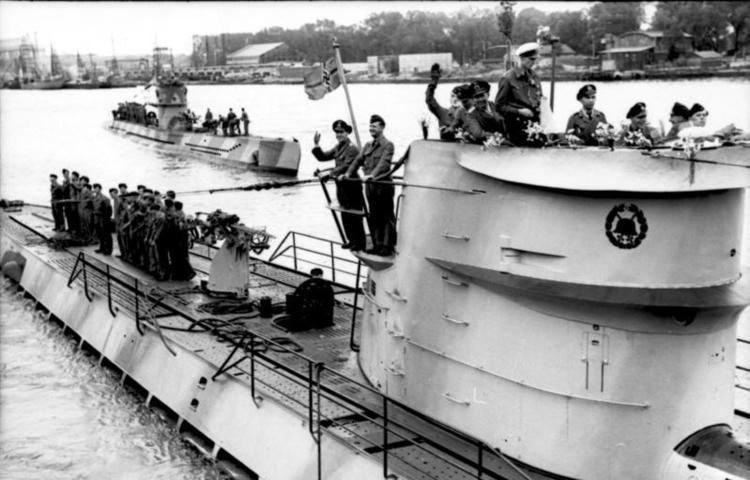Operators Kriegsmarine Succeeded by Type IXC submarine In service 1939–1945 | Preceded by Type IXA submarine Built 1938–1940 In commission 1939–1945 | |
 | ||
The German Type IXB submarine was a sub-class of the German Type IX submarine built for Nazi Germany's Kriegsmarine between 1938 and 1940. The U-boats themselves were designed to be fairly large ocean-going submarines. The inspiration for the Type IXB submarine came from the earlier original Type IX submarine, the Type IXA submarine. The design of the IXA was developed to give an increased range, a change which resulted in a slightly heavier overall tonnage. This design was improved even further in the later Type IXC submarines.
Contents
The class comprised 14 submarines, U-64, U-65, U-103, U-104, U-105, U-106, U-107, U-108, U-109, U-110, U-111, U-122, U-123, and U-124. The Type IXB submarines were the most successful class of submarine in the war in terms of the total amount to tonnage sunk, with each U-boat sinking an average of over 100,000 gross register tons (GRT) during its career.
Construction
All Type IXB submarines were ordered by the Nazi Germany's Kriegsmarine between 16 July 1937 and 8 August 1939 as part of Plan Z and the overall German plan of re-armament in violation of the Treaty of Versailles. The design of the IXB submarines came from the initial Type IX submarines, the Type IXA. All contracts for the construction of the submarines were awarded to DeSchiMAG AG Weser, Bremen. The first U-boat to be laid down in the Bremen ship yards was U-65, whose keel was laid down on 6 December 1938. The last U-boat to be laid down was U-111, whose construction began on 20 February 1940. By the end of 1940, all Type IXB submarines had been fully constructed and commissioned into the Kriegsmarine.
Design
All Type IXB submarines had 1,000 PS (986 shp; 735 kW) while submerged and 4,400 PS (4,340 shp; 3,236 kW) when surfaced. As a result, they could travel at 18.2 knots (33.7 km/h; 20.9 mph) while surfaced and 7.3 knots (13.5 km/h; 8.4 mph) submerged. The Type IXB submarines had a range of 12,000 nmi (22,000 km; 14,000 mi) at 10 knots (19 km/h; 12 mph) while on the surface and 64 nmi (119 km; 74 mi) at 4 knots (7.4 km/h; 4.6 mph) while submerged. They had 6 torpedo tubes (4 in the bow, 2 in the stern) and carried a total of 22 53.3 cm (21 in) torpedoes. Unlike the earlier Type IXAs, the Type IXB submarines were equipped with 44 TMA mines as well. The Type IXB submarines were equipped with a 10.5 cm SK C/32 naval gun with 180 rounds on a Utof mount. The last piece of armament that the Type IXB submarines were equipped with were the standard 2 cm (0.79 in) anti-aircraft guns. All Type IXB submarines could hold up to 56 crew members at any given time though that number was usually around 45–48 crew members. After being commissioned and deployed, all of the Type IXB submarines built prior to the fall of France were stationed in the German port city of Wilhelmshaven while those who were commissioned following the capture of numerous French ports during the Battle of France were stationed in Lorient.
List of Type IXB U-boats
The Type IXB class had 14 U-boats, all of which were built by AG Weser of Bremen:
